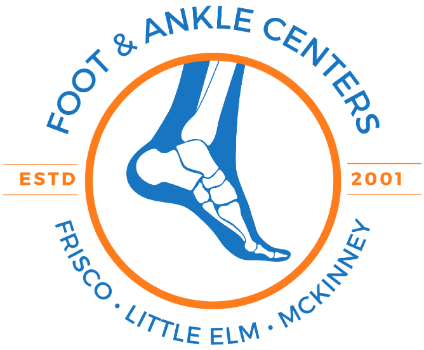Podiatric Care for Sesamoids and Accessory Bones of the Foot

What Is Sesamoids and Accessory Bones of the Foot?
Sesamoids are two small bones found at the bottom of the feet, located within the tendons of the lower leg and feet. They are an important part of the foot's anatomy, helping to support and absorb the weight of the body when walking, running, and standing. Unfortunately, sesamoids can be prone to injury and pain, which is why it is important for those who experience any type of sesamoid-related discomfort to seek professional care from one of our expert podiatrists at Foot & Ankle Centers of Frisco, Little Elm, & McKinney.
Accessory bones of the foot are small bones that are not part of the normal human anatomy and can vary greatly from person to person. Examples of accessory bones of the foot are the os tibiale externum, os trigonum, and os peroneum. Although these bones are not considered part of normal anatomy, they can cause significant pain and discomfort if they become irritated or inflamed. Symptoms of accessory bone irritation may include pain, swelling, stiffness, and difficulty walking.
Properly Diagnosing Your Sesamoids and Accessory Bone Conditions
There are dozens of causes for your foot pain due to sesamoids and accessory bones of the foot, which is why it is important to be seen by one of our skilled podiatrists. Some of the bones, injuries, or conditions seen by our expert podiatrists include:
- Sesamoid of Posterior Tibial Tendon
- Fracture Sesamoid
- Enlarged Sesamoid
- Painful Plantar Callus Caused by Sesamoid
- Sesamoid of Peroneal Tendon (OS Peroneum)
- OS Vesalianum
- Peroneus Longus Tendinitis
- Bursitis
- Nerve Compression
- Arthritis of Great Toe Joint
- Accessory Navicular
- Accessory Cuneiform
- Sesamoiditis

Treatment Options for Sesamoids and Accessory Bones of the Foot
For mild cases, rest and immobilization of the foot in a cast or brace is often recommended, along with taking anti-inflammatory medications to reduce swelling and pain. For more serious cases, surgery may be required to correct the problem. Your treatment plan will depend on the condition of your sesamoids, accessory bones of the foot, and if any tendons or tissue have been damaged. Some of the treatment options at Foot & Ankle Centers include:
- Resting and icing the affected area
- Compression and elevation
- Use of tapping, splint, foot brace, or cast
- Custom orthotics to support your foot
- Physical therapy or exercises to build the muscle
- Surgery to repair any damage or scar tissue
In addition to treating sesamoids and accessory bones of the foot, podiatric care at Foot & Ankle Centers of Frisco, Little Elm, & McKinney include preventive measures to reduce the risk of future injury. These can include wearing appropriate footwear, using orthotics, stretching before and after physical activities, and avoiding activities that may put too much strain on your feet.
